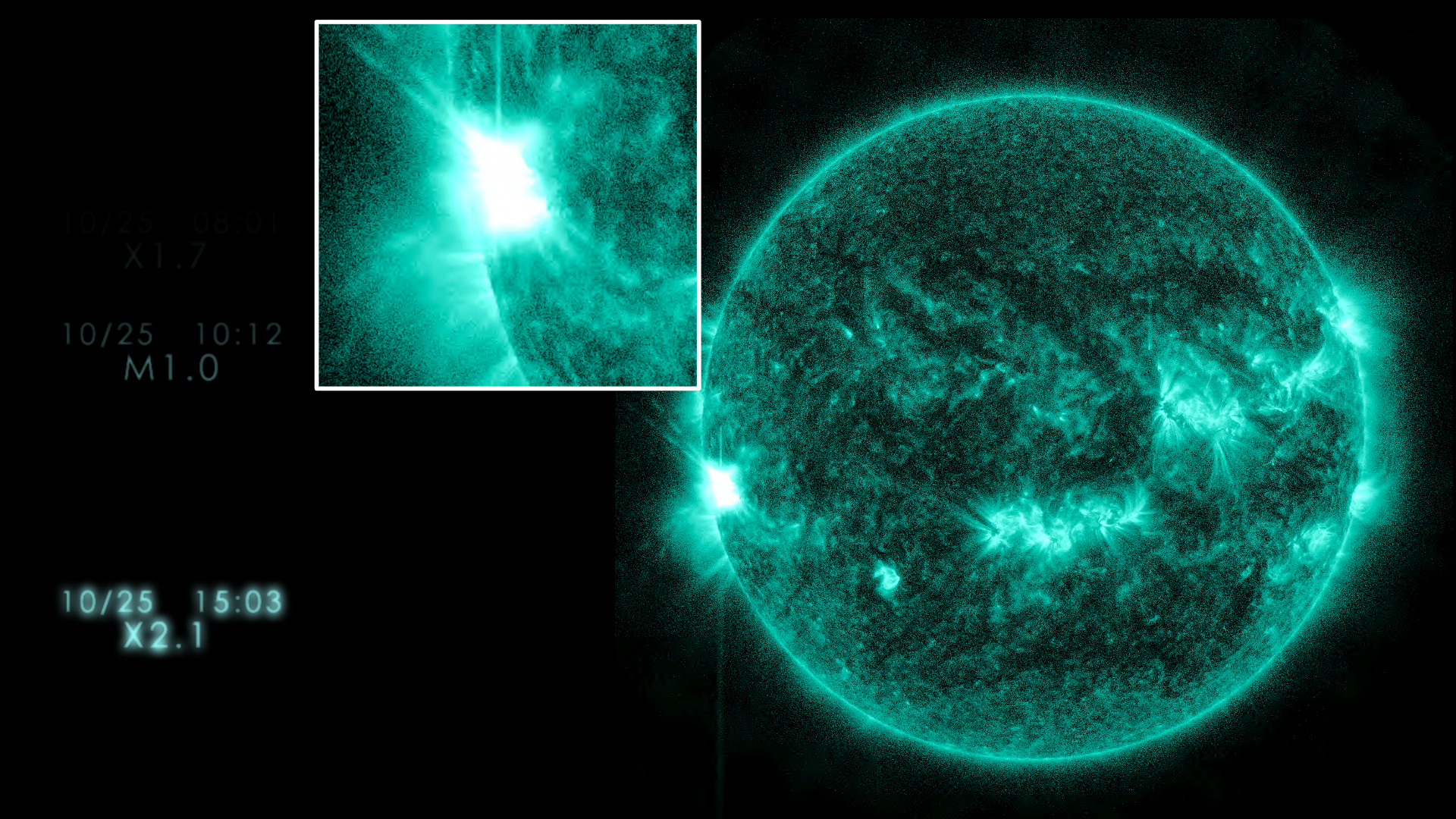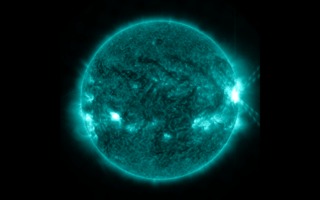Sun Emits Third Solar Flare in Two Days
The sun emitted a significant solar flare, peaking at 4:01 a.m. EDT on Oct. 25, 2013. Solar flares are powerful bursts of radiation. Harmful radiation from a flare cannot pass through Earth's atmosphere to physically affect humans on the ground, however — when intense enough — they can disturb the atmosphere in the layer where GPS and communications signals travel. This disrupts the radio signals for as long as the flare is ongoing, anywhere from minutes to hours.
This flare is classified as an X1.7 class flare. "X-class" denotes the most intense flares, while the number provides more information about its strength. An X2 is twice as intense as an X1, an X3 is three times as intense, etc. In the past, X-class flares of this intensity have caused degradation or blackouts of radio communications for about an hour.
Increased numbers of flares are quite common at the moment, since the sun's normal 11-year activity cycle is currently near solar maximum conditions. Humans have tracked this solar cycle continuously since it was discovered in 1843, and it is normal for there to be many flares a day during the sun's peak activity. The first X-class flare of the current solar cycle occurred on February 15, 2011. The largest X-class flare in this cycle was an X6.9 on August 9, 2011.

X1.7 flare from 4:01am EDT Oct 25 2013, viewed in SDO AIA 131. Cropped.

X1.7 flare from Oct 25, viewed in SDO AIA 131.

X1.7 flare from Oct 25, viewed in a blend of SDO AIA 131 and 171.

X1.7 flare from Oct 25, viewed in a blend of SDO AIA 131 and 171. Cropped.

X2.1 flare from 11:03am on Oct. 25, 2013. Blend of SDO AIA 193 and 131.

X2.1 flare from 11:03am on Oct. 25, 2013. Blend of SDO AIA 193 and 131. Cropped.

X2.1 flare from 11:03am on Oct. 25, 2013. Blend of SDO AIA 193 and 131. Cropped.

X2.1 flare from 11:03am on Oct. 25, 2013. Blend of SDO AIA 171 and 131.

X2.1 flare from 11:03am on Oct. 25, 2013. Blend of SDO AIA 171 and 131. Cropped.

X2.1 flare from 11:03am on Oct. 25, 2013. SDO AIA 131.

X2.1 flare from 11:03am on Oct. 25, 2013. SDO AIA 193.

M9.4 flare from 00:30 UT on October 24, 2013.
Credits
Please give credit for this item to:
NASA's Goddard Space Flight Center/SDO
-
Producer
- Scott Wiessinger (USRA)
-
Writer
- Karen Fox (ADNET Systems, Inc.)
Release date
This page was originally published on Friday, October 25, 2013.
This page was last updated on Wednesday, May 3, 2023 at 1:51 PM EDT.
Missions
This visualization is related to the following missions:Series
This visualization can be found in the following series:Tapes
This visualization originally appeared on the following tapes:-
2013 Heliophysics Breaking News
(ID: 2013021)
Tuesday, December 31, 2013 at 5:00AM
Produced by - Robert Crippen (NASA)

